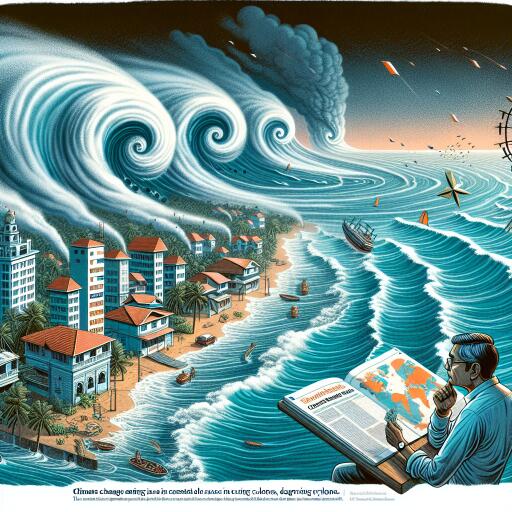
Climate Change Causes Issues In Coastal Areas During Cyclones: Weather Chief
In the face of burgeoning climate change concerns, Dr. Mrutyunjay Mohapatra, a leading figure at the India Meteorological Department, highlights the severe challenges emerging in coastal regions due to the relentless rise in global temperatures. This warming trend, he notes, is instigating a worrying ice melt in polar areas, subsequently causing sea levels to ascend. The implications are particularly grave for coastal regions during cyclones, where rising seas exacerbate already perilous conditions.
Dr. Mohapatra explains that climate change is a continuous affair. However, recent decades have witnessed an alarming acceleration in surface air temperature increases. This variation, coupled with global warming, is fueling a surge in the frequency, duration, and intensity of various severe weather phenomena such as heat waves and torrential rains. These changes are not only affecting human habitats but are also significantly impacting animal and plant ecosystems. The warming has initiated an ice-melting process in polar regions, leading to rising sea levels which, especially during cyclonic events, present formidable problems for coastal zones.
Human activities, particularly those that contribute to the increase of greenhouse gases, are largely accountable for this shifting climate landscape. Efforts to curb this include an organized conclave aimed at raising awareness, encouraging individuals to take actionable steps to minimize the emission of these gases. By understanding the long-term atmospheric lifespan of greenhouse emissions such as carbon dioxide and methane — ranging from 100 to 300 years — the effort is to reduce their concentration and, consequently, their deleterious effects on the environment.
Additionally, Dr. Mohapatra discusses specific weather projections for the immediate future. He notes that a low-pressure system over the North Bay of Bengal is anticipated to alter weather patterns in Odisha by October 4. Furthermore, a cyclonic circulation has been observed over South East Bangladesh and surrounding regions. This system is expected to evolve into a low-pressure region near the northern Bay of Bengal, West Bengal, and northern Odisha around the same date. Despite its potential to influence local weather conditions, it is not expected to develop into a full-blown depression or cyclone. Instead, as a low-pressure system, it may traverse inland, causing weather variations across northeastern states, eastern and northern Odisha, as well as West Bengal.
With the current trajectory indicating a future filled with climate uncertainties, there is an emphasized need for society to advocate for and implement strategies aimed at significantly reducing greenhouse gas emissions. While the challenges ahead are daunting, proactive measures can mitigate some of the potential damages and safeguard vulnerable regions, particularly coastal areas prone to the impacts of cyclonic storms and sea-level rise.





Leave a Reply